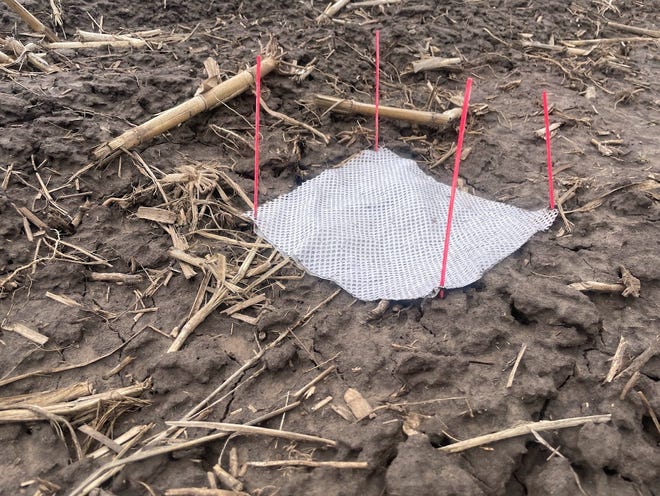Midwest losing soil 10x faster than new soil is being formed. How can we slow it down?

Soil is a vital resource, important to farming and non-farming communities. It is a medium for plant growth, cycles nutrients, filters water, and is a foundation for all building infrastructure. We benefit from rich soils here in Wisconsin that took thousands to millions of years to form. The Midwest is estimated to be losing soil 10 times faster than new soil is being formed. This loss of soil has both economic and environmental impacts.
The movement of soil to new locations means a loss of valuable fertility, and even impacts flooding by changing stream channel dynamics. One of the water quality concerns of soil erosion is the particulate phosphorus attached to the soil particles.
Agricultural systems that bring in additional phosphorus for fertility or animal nutrition, also lose phosphorus in amounts higher than natural systems. Phosphorus is commonly the limiting nutrient in aquatic ecosystems within Wisconsin. When phosphorous enters aquatic ecosystems, it often causes a flush of algal growth that can produce toxins, alter food chains, and can lead to low dissolved oxygen levels and fish kills.
How will climate change affect soil erosion?
Limiting soil erosion will become even more important as climate change is predicted to increase extreme precipitation events in the spring when soils are often saturated from snow melt and when the majority of erosion occurs. Discovery Farms edge-of-field monitoring indicates that over 60% occurs in May and June due to fallow ground paired with spring tillage. Fortunately, there are both in-field and edge-of-field practices that can help keep the top soil ‒ the richest in fertility and organic matter ‒ on the field.
Identifying the three phases of soil erosion
Soil erosion occurs in three phases: detachment, transport, and deposition. Controlling the amount of soil particles that detach during a rainfall event is the first step in reducing soil loss. The physical impact of raindrops on unprotected soil causes the loosening of soil particles and can detach small soil particles that are then more easily transported in water.
Perennial cover or living cover crops are best for reducing soil erosion, their biomass intercepts the raindrop’s force, and their roots hold the soil in place. Reduced tillage and residue management also play a large role in reducing erosion. Residue provides a barrier between the raindrop and bare soil.
For example, no-till in Wisconsin typically leaves 70% residue cover, while a chisel plow decreases the amount of residue to around 37%, creating smaller, more vulnerable soil aggerates. Reduced tillage, crop residue, and cover crops build larger soil aggregates and increase their stability.
Well aggregated soil with adequate pore space for air also increases water infiltration leading to less runoff and minimizing the soil moving with it.
Determining soil dislodgement risk, and implementing conservation practices
Considering each fields’ risk of soil dislodgement is key to determining where to place conservation practices. For example, a corn silage field has a much higher risk of soil loss than a corn grain field due to the dramatically reduced amount of crop residue. Cover crops would be more impactful on a corn silage field compared to the corn grain field. Producers may have questions on how different agronomic management strategies impact soil dislodgement, like cover crop species, seeding rate or termination timing.

Edge of field monitoring is expensive and measures how much soil will be deposited outside of the field basin, not how much soil movement within the field is occurring.
Researchers from Iowa State University and the University of Minnesota have explored low-tech demonstration options to evaluate soil dislodgement such as small fabric mats. The mats have two layers of fabric that catch soil splashed onto the surface during rain events or deposited onto the fabric during runoff events.
Mats are left within the field until two inches of precipitation occurs or two weeks pass, whichever comes first. After the mats are removed, they are weighed to determine the amount of soil dislodged per acre. Soil can even be submitted for fertility analysis to estimate the economic impact of erosion. The Agriculture Water Quality Program within UW-Madison Extension has mats available for interested participants. Please reach out to Chelsea Zegler at zegler@wisc.edu to collaborate.

Chelsea Zegler is the Agriculture Water Quality outreach specialist at the University of Wisconsin-Madison Division of Extension
